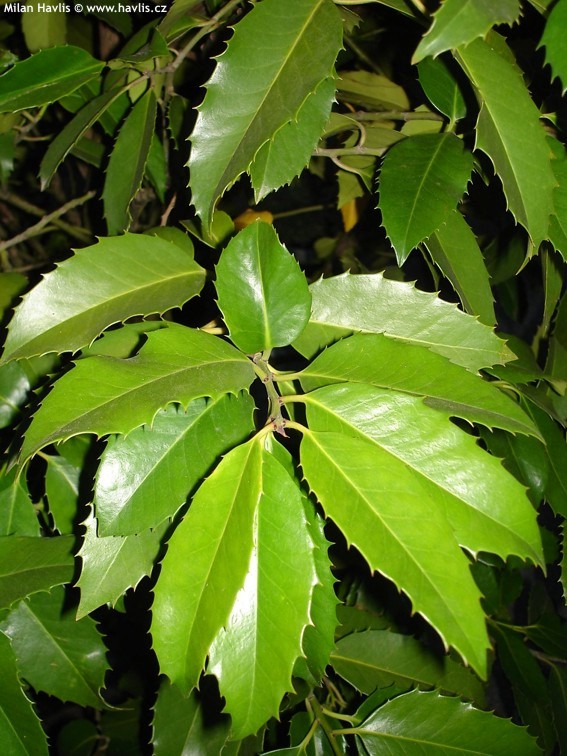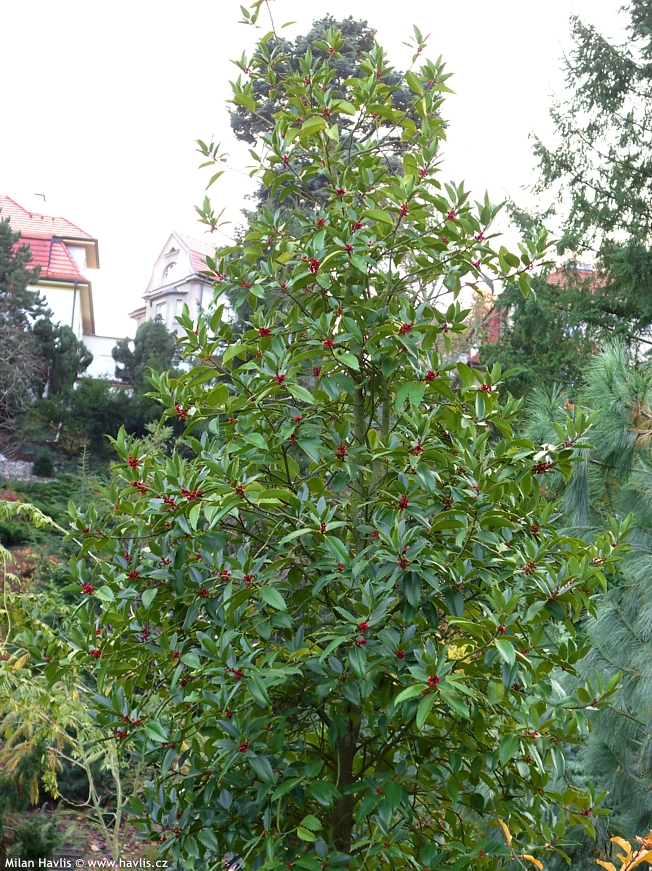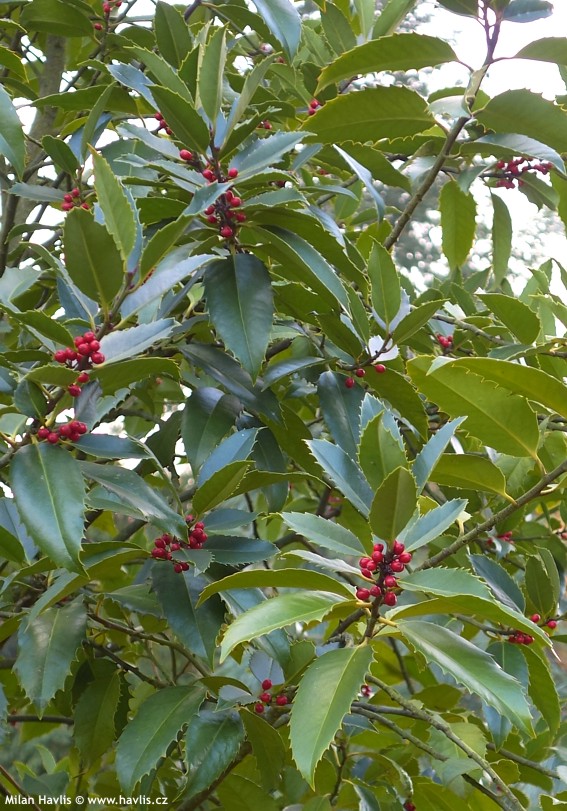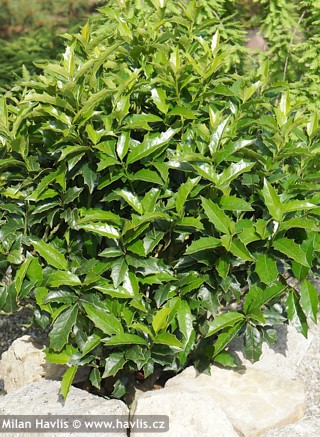Ilex x koehneana 'CHESTNUT LEAF' Koehne holly - female
size/type
small tree,small tree
usual height
2-6m
usual width
1,5-3m
leaves
evergreen broadleaf
colour of leaves
flowers
insignificant or non-blooming
location
full to partial sun
soil type
acidic (peaty) to neutral
soil moisture requirements
evenly moist (dislikes drought)
USDA zone (lowest)
7 (down to -23°C)
winter protection
for zone 5+6

for zone 7

categorized
Ilex
Koehne holly is a less known hybrid between ilex aquifolium (English holly) and ilex latifolia (large leaf holly) which for some reason is not widely available in European nurseries. I call it a pity. And since I love all evergreen plants and especially those with large leaves, it makes sense that this holly will receive a little more thorough examination as well as good promotion.Description of the plant:
Chestnut Leaf is probably the most common variety when you happen to come across a Koehne holly in Europe early 21st century. I am giving this date deliberately in case you are reading this article in 2050 or later, laughing how come that we used to be so deprived having just one Koehne holly then. Anyway, back to the subject. Its name reckons there is a similarity to sweet chestnut leaves which I can only confirm. The leaves are up to 15 cm long, broadly elliptic, serrated or short-spined at margins, rich green, and glossy. The difference is that they are leathery and evergreen. It is a female variety that, if a male pollinator is nearby, bears vivid red berries in drupes just bellow the newest sets of leaves at the end of each branch.Under ideal conditions, e.g. in Benelux countries and England, it may grow almost 10m tall, whereas in our zone 6 it is smaller. Young plants grow fast into a symmetrical, narrowly conical shrub and slow down with age when the habit gets denser and broadly oval. Its size seldom exceeds 5m tall and 3-4m wide in maturity. It can be pruned and shaped to maintain smaller size. Do not cut into old wood. It takes a considerable amount of time to repair its shape. Pruning in April will encourage new growths, trimming by end July is ideal for shaping.
Grow hollies in moist but well-drained, light, and fertile soil. They can take periods of drought once established. Hollies do best in full sun but can also grow in the shade. They hate compacted and clay soil nearer the top of the ground, therefore we suggest using a mycorrhizal fungi when transplanting it, and regular fertilizing for at least 3-4 years before it fully establishes. If you live in a region with cold winters and long-lasting frost we recommend growing it in position sheltered from drying winds, and preferably shaded from winter sun. Hardy to USDA zone 6, it can possibly take a little harder frost for a limited time.
Last update 25-12-2016; 18-08-2019
QUICK PRICE OVERVIEW
CURRENTLY SOLD OUT


















